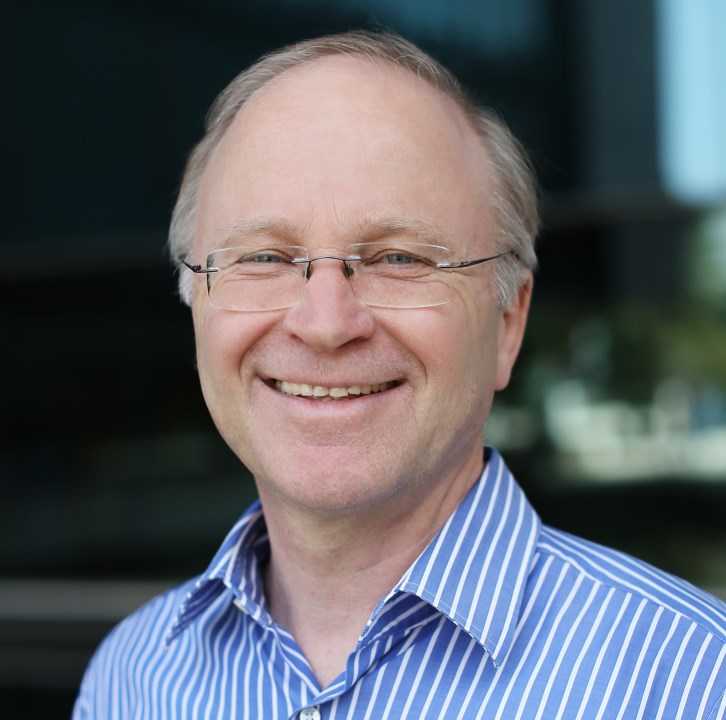
Invited Speakers

Helmut Pottmann
King Abdullah University of Science and Technology (Saudi Arabia),
Vienna University of Technology (Austria)
Recent Progress and Open Problems in Architectural Geometry
Many of today’s most striking buildings are nontraditional freeform shapes. While the digital design of freeform geometry is well understood, the actual fabrication on the architectural scale is a big challenge, but also a rich source of research topics in geometry and geometric computing. The talk will provide an overview of recent progress in the emerging field of Architectural Geometry, elaborate on important relations to Discrete Differential Geometry and Geometric Optimization, illustrate the transfer into the architectural practice at hand of selected projects and point to open problems and directions for future research.
Short Bio:
Helmut Pottmann is professor of geometry at Vienna University of Technology and head of the `Geometric Modeling and Industrial Geometry' research group. Since 2009, he is Professor of Applied Mathematics at King Abdullah University of Science and Technology in Saudi Arabia, where he has been founding director of the Geometric Modeling and Scientific Visualization Center until 2013. His research interests are in Applied Geometry and Visual Computing, in particular in Geometric Modeling, Geometry Processing and most recently in Geometric Computing for Architecture and Manufacturing.

Wojciech Matusik
MIT (USA)
From Virtual to Real
A wide-spread adoption of 3D printing is democratizing manufacturing. The ever expanding range of printing materials allows for fabrication of complex multi-material objects that cannot be manufactured using any other method. However, while there has been tremendous progress in the development of the output devices, the provided digital content creation software, algorithms, and tools are largely underdeveloped. The overall situation is analogous to the digital printing and content creation revolution of the early 1980s before the advent of PostScript.
In this talk, I will describe abstractions that are necessary to scale the complexity of the 3D printed models. First, I will present OpenFab - a direct specification pipeline for multi-material fabrication - inspired by the programmable pipelines used for film and real-time rendering. The pipeline introduces user-programmable fablets - procedures evaluated for each point inside of the object volume that return material composition. The system is designed to stream an arbitrary number of voxels with a fixed and controllable memory footprint. As an alternative to directly specifying material composition, it is often more natural to specify an object by defining its functional goal (e.g., specific color, stiffness, or refractive index). I will present Spec2Fab - a computationally efficient and general process for translating functional requirements to fabricable 3D prints. Spec2Fab provides an abstraction mechanism that simplifies the design, development, implementation, and reuse of fabrication algorithms. I will demonstrate a variety of applications that take advantage of both systems.
Short Bio:
Wojciech Matusik is an Associate Professor of Electrical Engineering and Computer Science at the Computer Science and Artificial Intelligence Laboratory at MIT, where he leads the Computational Fabrication Group. Before coming to MIT, he worked at Mitsubishi Electric Research Laboratories, Adobe Systems, and Disney Research Zurich. He studied computer graphics at MIT and received his PhD in 2003. He also received a BS in EECS from the University of California at Berkeley in 1997 and MS in EECS from MIT in 2001. His research interests are in direct digital manufacturing and computer graphics. In 2004, he was named one of the world's top 100 young innovators by MIT's Technology Review Magazine. In 2009, he received the Significant New Researcher Award from ACM Siggraph. In 2012, Matusik received the DARPA Young Faculty Award and he was named a Sloan Research Fellow.

Misha Kazhdan
Johns Hopkins University (USA)
Thinking about Geometry Processing
In computer graphics in general, and geometry processing in particular, mathematics has played an essential role in many recent developments - providing a language for formulating and guaranteeing properties of proposed algorithms. Looking back on the presenter's work in symmetry detection, surface reconstruction, and geometric flow, this talk will try to explore the relationship between these two fields. In particular, we will focus on how thinking about geometric questions from a mathematical perspective can help guide the development of algorithms. And, conversely, how questions of algorithmic implementation may help inform the underlying mathematics.
Short Bio:
Misha Kazhdan is an associate professor in the Computer Science Department at Johns Hopkins University. He received his PhD from Princeton University where he worked on problems in the domain of shape matching and shape analysis. His more recent research has focused on the challenge of surface reconstruction and image/geometry-processing - developing efficient streaming out-of-core algorithms for solving large sparse linear systems over adapted discretizations - as well as problems in geometric flow - looking at ways in which genus-zero surfaces can be stably evolved to the sphere.